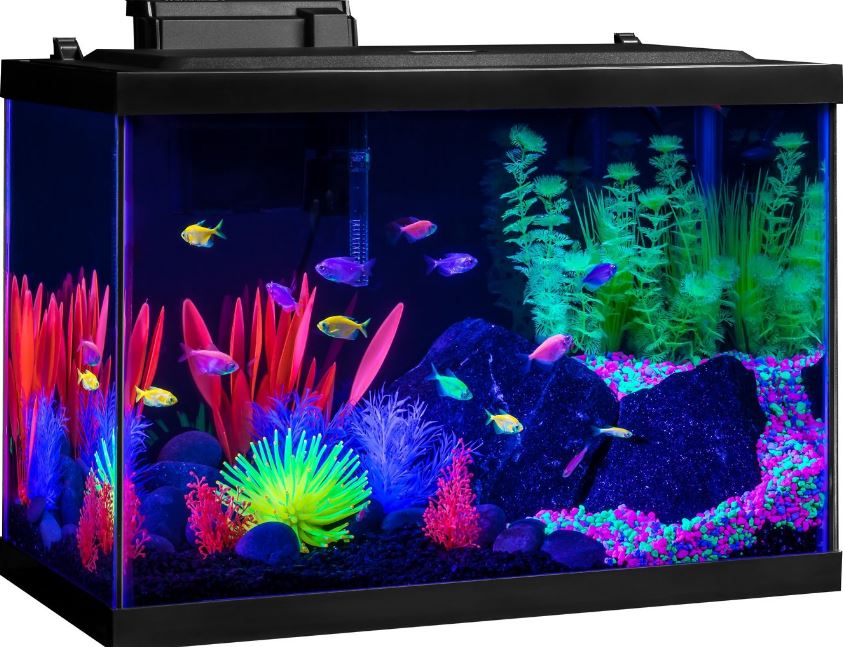

Feed them small pieces of live meals as they can have difficulty swallowing larger ones. Neon tetras will also accept live foods in the form of daphnia, tubifex, blood worms, and brine shrimp.īe careful with live foods as they can introduce the parasites that cause the neon tetra disease. You need high-quality pellets to form the basis of their diet since flakes may be unsuitable for their small mouths. Wild neon tetras sustain themselves on an omnivorous diet.

Use a model that is specified for a larger tank since it is best to over-filter than under-filter.Īlthough neon tetras have a small bio-load, you still want to perform regular water changes. You can use a hang-on-back filter or a sponge model for filtration. A reliable heater will maintain the temperature range between 72-76 ☏. Keep in mind that neon tetras are a tropical species, and they require warm water. You can use a peat bag to lower the PH and slightly discolor the water. The water should be soft with the PH between 5.5-6.8 and the water hardness below 10 dGH. The tetras demand pristine conditions without ammonia or nitrites. The fish will only thrive in a mature, stable, and well-cycled tank. Neon tetras are susceptible to unstable water parameters, and you should never add them to an immature tank. Floating plants will also dim the lights and create a calm environment for your fish. Provide two watts per gallon of fluorescent light. Neon tetras are adapted to low to medium lighting. You should ensure that the decorations do not have sharp edges to avoid injuring your fish. The green color of live plants also contrasts well with the bright hues of the neon tetra.ĭriftwood is popularly used to add shade in a neon tetra tank, and you can also use rocks and caves. Plants will not only mimic the natural habitat of the fish, but they will absorb toxic elements and maintain water quality. Specimens to consider include Java moss, waterweed, pennywort, Amazon sword, ludwigia, and Java fern. They will thrive in a planted setup with floating varieties like water lettuce and red river floaters to diffuse the light.Ĭhoose plants that will survive in low-light and acidic conditions. In the wild, neon tetras gravitate towards areas with dense vegetation. You can use gravel or sand, and you should invest in a plant-based substrate if keeping them in a planted aquarium. With fish as colorful as neon tetras, however, you want a dark bottom that will contrast beautifully with their bodies. Neon tetras swim in the middle of your tank, and the substrate choice will be based on preference. It is also easier to maintain water quality in a larger setup. A single neon tetra will require two gallons, but they are schooling fish, and you should keep a small shoal in a minimum of 10 gallons.Ī 20-gallon tank is ideal since it gives them room to swim together. Neon tetras will mostly reach 1-1.5 inches in aquariums. The fish has adapted to a variety of conditions due to being bred for commercial purposes. Most neon tetras in pet stores originate from large farms based in Hong-Kong, Singapore, and Thailand. Less than 5% of the neon tetras in the aquarium trade are caught from the wild. Most wild-caught neon tetras are from Rio Solimões, which is the upstream region of the Amazon River. The water temperature fluctuates between 20-26 ☌ as the rivers transverse through tropical areas. The waters in their natural habitats are soft and slightly acidic. Neon tetras generally stay clear of the whitewater streams that originate from the Andes. Their populations have been recorded in various South American nations, including Brazil, Peru, and Colombia. They are adapted to clearwater and blackwaters water bodies in the Amazon and Orinoco river systems. Neon tetras belong to the Characidae family. When buying neon tetras, however, you want to avoid specimens with dull colors as it often indicates poor health. The neon tetra has similar markings to those of the cardinal tetra, but the latter’s red stripe extends across the entire body.ĭo not be alarmed when your neon tetra loses its color at night, as it fades when the fish is resting. Below its white-silver belly is a bright red stripe that stretches to the tail. A bright neon-blue stripe is visible on the top half body. The popularity of the tetra is mostly credited to their lively colors. Neon tetras may be hardy, but you still need to maintain the right water conditions for them to thrive. You can find these tetras in almost all pet stores.

Neon tetras are small and colorful, and they make excellent pets for beginner aquarists. As an Amazon Associate we earn from qualifying purchases. This page may contain affiliate links, which will earn us a commission.


 0 kommentar(er)
0 kommentar(er)
